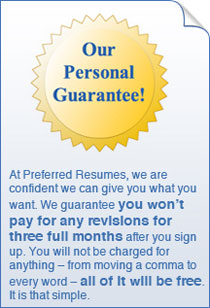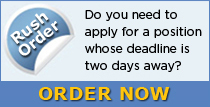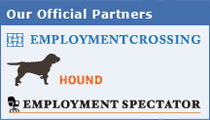Prioritizing job descriptions in your resume
|
|
When people are asked about work responsibilities, they have a tendency to disclose the routine items first. This method can be a costly mistake for listing your professional experiences on your resume because it leaves all of the important and key qualifications at the bottom of the list. To avoid falling into this practice, first put together a list of your responsibilities on a sheet of paper. For your initial draft, don’t worry about how you are phrasing each statement – just make a list of everything that you do in your current or have done in your previous jobs.
Once your list is completed, consider all of the responsibilities you have included. What are the three most important items on the list for each job? How do those items relate to your career objective? Are there any other responsibilities you have listed that better support your career objective than the three you picked as the most critical to your job? You have to consider all these questions in order to prioritize your job descriptions on your resume.
Begin each description with a power word, such as managed, developed, communicated, etc. Make sure that the statements you list first quantify your achievements – don’t be afraid to list sales figured, customer acquisition rates, budget and timeline successes, or any other figures which help put your responsibilities in a context of the business/field you are working in. Also, these statements should be aligned with your career objective. If you want to get a job in project management, letting your employer know that you managed a team of 20 people will effectively highlight your qualifications. It is important to quantify your job description statements on your resume; however, as a word of caution, do not quantify all statements, just one or two that are most critical to your job and are goal driven. This shows your employer that you think in terms of exceeding your goals. All subsequent descriptions of your responsibilities should support the first one or two items on your list.
Prioritizing doesn’t only apply to your job descriptions, although it is the most commonly disregarded element in this particular area of the resume. Achievements and qualifications are often misrepresented because they are not ordered properly. Same rules apply – consider which of your achievements and your qualifications are most complimentary to your career objective, and list them first. For example, if you are applying for a job in customer service, list your communication skills before your computer skills. While both are important, your communication skills are more in line with your career objective, and therefore should take priority.
As a final test, put yourself in the shoes of your employer. Cross-check the job description and make sure that you address the qualifications required for the job with the information on your resume. Let your potential employer know you have what they are looking for, and you’ll be sure to make a great impression.




